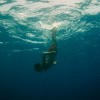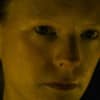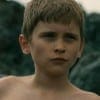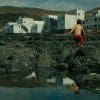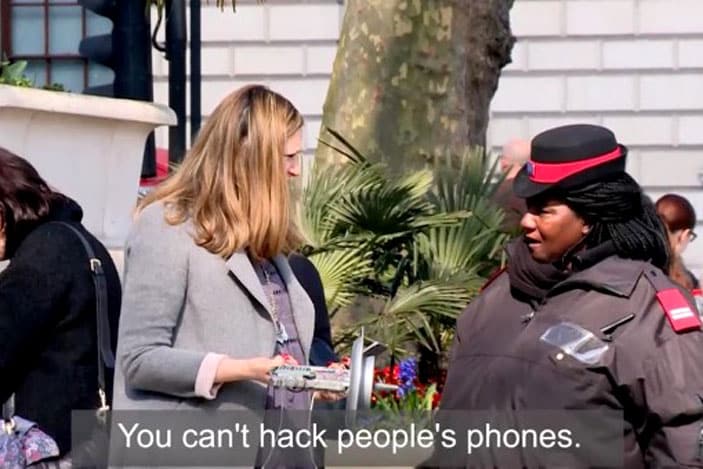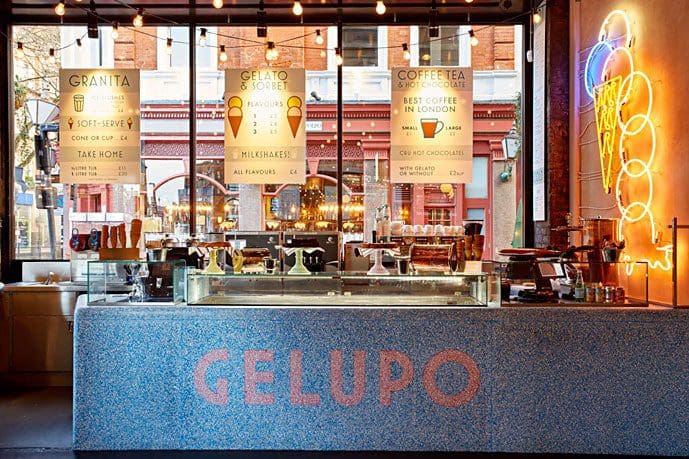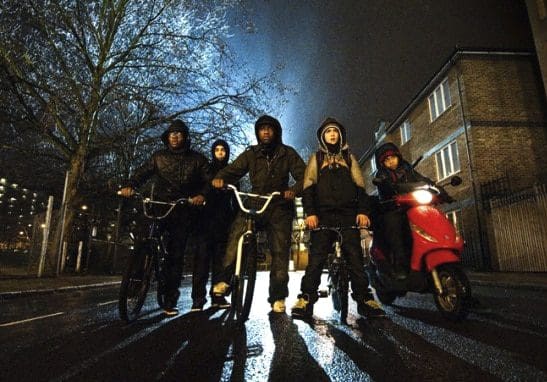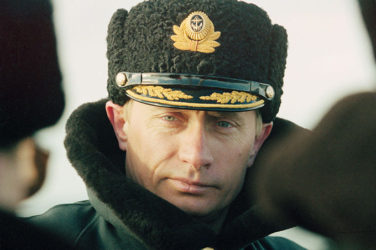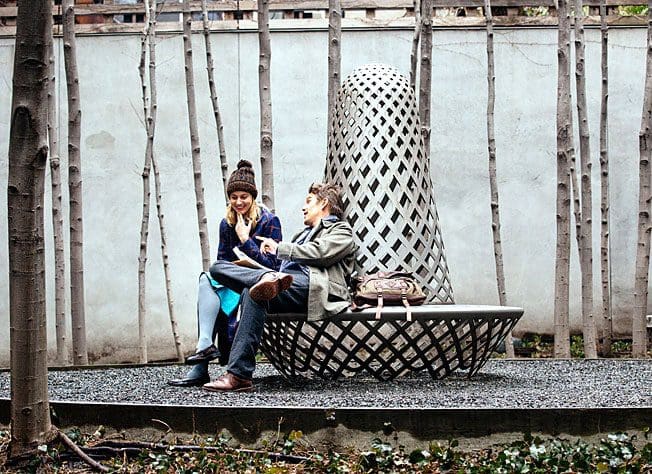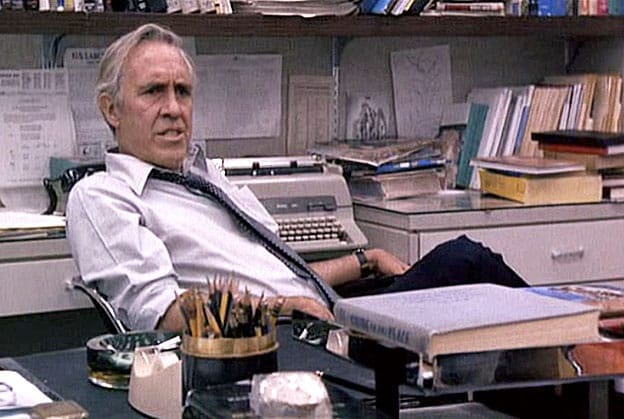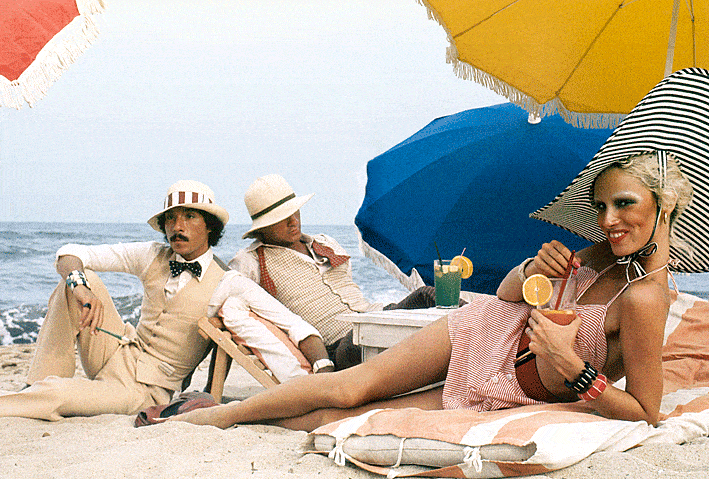Interview with Lucile Hadžihalilović by Thomas Humphrey
Fans of Lucile Hadžihalilović will remember the excellent Innocence, a film which entered a mysterious girls’ commune with a very ominous secret behind it.
With Evolution, Hadžihalilović explores similar territory but it seems better somehow. This movie feels more cinematic, more concertedly a sci-fi genre piece and the results are exquisite.
This time, we wash up on the shores of a colony of boys who are being looked after a group of mysterious mothers with sinister intentions for their lives. What is particularly fantastic about this film, however, is the way it is never simply your average sci-fi or horror piece.
It’s unusually retro-futuristic and always incredibly artistic and beautiful in its unnerving techniques. This means that Evolution is forever seducing you with its mesmerising, oceanic images and at the same time repelling you with the incredible weirdness of things you thought you were already familiar with. This makes it a feature that gets deeply under your skin, and it is sure to linger in your memory for some time.
Is it as simple as to say that Evolution is a kind of sequel to Innocence, or is the relationship between the two films very different?
Of course with retrospect I can now see how much the two films are similar, and how close Evolution is to Innocence in terms of style. But in fact, I actually started to work on this project before Innocence – a little bit, anyway. It was still in its sort of embryonic stages, but then I read the story for Innocence, and I decided to do that project first.
But after that project was finished, I decided I wanted to go in another direction, and for me maybe that meant that I wanted to do something that was a bit more of a narrative project. I also wanted my next film to be much more directly a genre film, something like a science fiction or this kind of thing. So I did always have the feeling that my second film was going in a different direction.
This film is also much less abstract; but because it once again contains children I could see that it would be a bit similar too. The differences were very important to me, actually. Though I suppose the more time I spent making the film, the more I realised that the two are actually very similar.
So what do you think it is that attracts you so much to stories that contain these sinister adult and children relationships?
Yeah, I guess I am quite drawn to that. Maybe I could spend years thinking about… but I think I do get this kind of paranoid feeling [Chuckles.] This kind of paranoid feeling about adults, for some reason. I mean nothing really dramatic happened to me as a child. I don’t know, I guess these fears must just be something very deep.
Though in Innocence adults are more in the background. Maybe that’s part of what made adults so scary for me as a child: the fact that I didn’t totally see or understand what adults were doing or thinking. They were like these enigmatic, moving figures to me; and at that age you couldn’t direct your own life somehow either. So you were so dependent on them, and what they thought was good or not for you.
Again though, it wasn’t like I didn’t have a very normal childhood, because I did. It was just really this fear of not being in control and not understanding. Also, I think it’s definitely related to when you’re at that age when you begin to understand you’re going to change and become a teenager. That period when you start to get a bit more emancipation from adults too. Though even then you’re still very dependent on them, so maybe that’s hard to work out.
And was it also difficult working with actors who were in this kind of very young, in-between stage?
The difficulty there was probably much more getting Max, who was in the lead role, to express those kinds of fears convincingly. That was always what I wanted to get from, right him from the very beginning. That’s why I chose Max, because he I found he had this kind of fragility, but was also charismatic.
Maybe I also selected him because, given his real age, he still has something quite small about him, something delicate or fragile. He also has perhaps a little something strange in his physique, so even if maybe you’re not conscious of it, I do think there’s something about his which is also unusual yet nice and touching.
To get him to express fear as an actor was very difficult though, because again we didn’t have much time to perfect the shots, so it was often just doing one scene after another. I think to have really gotten that from him I would have needed more time, as he was quite inexperienced. So in the end what I really tried to do with him was to get his concentration, and that was major directing challenge in itself: to make him concentrate in this kind of tense way in each shot. I never really film him being relaxed.
From there I think we adopted this kind of more neutral style of acting, and I actually think with this kind of neutral face his acting proved to be really quite interesting. Sometimes you can see some of the more horrifying scenes through his eyes, rather than just always looking at his reaction. You also end up experiencing the same emotion as him more.
Much of Evolution also seems to be built around this kind of horrifying natural binary too. Nature is always both incredibly beautiful and incredibly monstrous.
Yeah, absolutely. The idea was very much that the film should always be both attractive and repulsive. These were two reverse sides of the same coin that were always meant to be suddenly seen one after another, and it became very clear to us that that could be done using natural elements.
So for instance, we had this kind of theory about the ocean. When you go there – to this island of Lanzarote in the Canary Islands – the strength of the sea is very apparent. It’s both amazing and scary. So we immediately knew that we wanted to shoot there, on its wild coast, where there’s a lot of wind and the sea is very strong. For me, it was a very captivating place.
But from the very beginning, the idea of things like the motif of the starfish, and the children playing with starfishes – this kind of familiar element – was always there. I mean, when you really start to look at the starfish, it is such a weird and strange animal. It’s so far removed from our species, also. There’s so many weird little things they can do so it was inspiring to learn more about what starfish are really, and it was one way to really give yourself food for though and substance to the film.
So this idea of making the familiar unfamiliar and the strange beautiful, or to switch from beauty to horror and back again, was always quite important. We really wanted to play with that.
That sounds a lot like the kind of thinking behind Freud’s conception of the uncanny, where you thinking about that at all when you were constructing the film?
Yeah, somebody was similarly mentioning this morning that the film is quite Jungian. Maybe it is more a product of Jung than Freud. It’s maybe more coming out of his kind of interest in mythology. I mean, I didn’t really think about it like that. It wasn’t really a conscious decision, except for this familiar/unfamiliar idea I was working from, but I suppose Freud and Jung were working at a similar time and looking at quite similar things.
Even when this other person mentioned Jung though, I thought, “yeah, that’s true,” because I have previously read his books. And I am very interested in his ideas of these kinds of mythologies or images that we share, at least here in Europe. They’re ideas that I think we can understand without being too precise about it.
For instance, the women in my film can of course be quite easily related to mermaids or the Sirens, so it has a bit of that. That meant that I didn’t need to go too much in that direction as a director, because it’s already quite easily clear. Maybe that layer of meaning is even already too obvious? Maybe if I could go back, I would have done that differently and tried to get a bit more distance from this.
There seemed to be a real philosophy of contrasts in your cinematography as well. Were you having lots of discussions with your cinematographer about this?
Yeah, I think what I try to do with cinematographers is establish rules with them. So we will have these kinds of directions ready laid out. It’s a way for me to protect myself. A way for me to be sure as a director, because sometimes if when we’re shooting I don’t know what to do, then I can consult the rules.
This might be things like not moving the camera or using the scope or sticking to using natural light – let’s just say a few rules like that. They help us to always keep going in the right direction, and give us a kind of consistency to the look of the film.
I do like to play a lot with the colours in my films, though. I really like to enhance them, so often you will get this combination of natural and artificial elements in my films. Like I said, I might portray the colours a bit more intensely than they’re supposed to be. Or I might have a scope or frame which comes across as very artificial and gives a kind of very strong effect.
These were the kinds of things I would frequently talk about with my cinematographer on this film, and then we’d just do it [Laughs.] I mean, like I mentioned, the process is very fast, so you have to have these reference points and it definitely helped. I also always try to use D.O.Ps who, if I don’t know what to do myself, I feel I can trust them in these kinds of situations.
In terms of taste, and of their eye, I need to feel like I can trust them. And that’s exactly how it happened with Benoît Debie on Innocence and Manuel Dacosse on this film. Sometimes I would feel that I could really be confident with them if ever I was unsure. I would be confident that the choices they would make would suit my style of direction, so that meant a lot to me.
You also have this sort of confusing type of clash in the time period that the film is set in – it seems kind of futuristic, but also seems really low-fi.
Yes, I used to say the film is out of time, but I know it’s not totally out of time. It’s maybe set more in a kind of early 70s period. The village we shot in too, I think it was probably built in the 50s or 40s, maybe even a little bit earlier than that, and I don’t think it’s changed a lot since then. So you don’t really know if the film is set in the 60s or 70s. It has a kind of feeling of being out of time, I think.
I suppose that also has a lot to do with the fact that this is a story about a child. Therefore I relate it to my own childhood, which for me, naturally, is linked to the 70s [Chuckles.] I guess that’s probably why the film looks a bit like that. Though I also liked the idea that if the film is a kind of sci-fi, it would be this kind of science fiction that is contemporary. Or rather more this kind of… how do you say it in English… retro-futurism? This kind of world that isn’t necessarily full of technology.
That also relates to when I was a child or teenager, because I was reading lots of science fiction stories then. But they tend to be a particular kind of science fiction, and it didn’t tend to be so full of this kind of technical stuff. The emphasis was more on the fiction, I guess.
Evolution in showing now in cinemas
Interview with Lucile Hadžihalilović by Thomas Humphrey


